We built an Interrotron
We built an Interrotron
Date
Mar 17, 2025
Category
Stonecastle Labs
If you’re obsessive about your interview subjects looking directly into the camera, then you probably already know what this contraption is. But to the frustration of many documentary filmmakers, you can’t just grab one at Best Buy. If you want an Interrotron, you have to build it yourself. So on a cold day this past February, that’s exactly what we did.
Interro-what?
Thirty years ago, documentary filmmaker Errol Morris was looking for a way to film an interview where his subject appeared to be looking directly into the camera — instead of looking off-camera at a presumed interviewer. What he came up with was an unwieldy assemblage of teleprompters, cables, and cameras connected to each other. But it worked.
Morris first tried out his new device on former Secretary of Defense Robert MacNamara for his Oscar-winning documentary Fog of War, and the result was mesmerizing. Morris’ wife began calling the device the Interrotron: half interview, half interrogation. The name stuck.
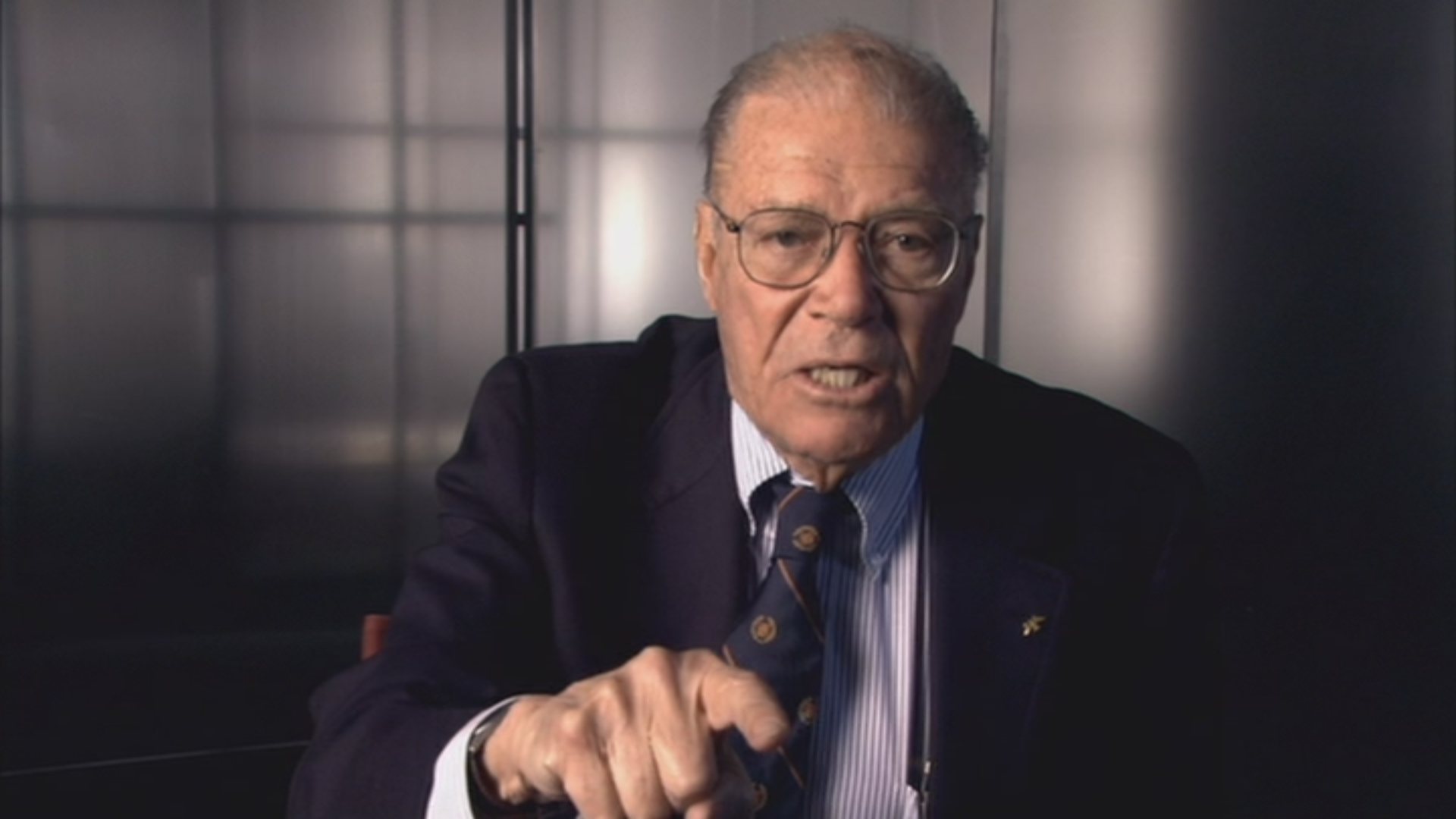
Former U.S. Secretary of Defense Robert McNamara staring into the Interrotron in "Fog of War"
How it works
An Interrotron works by mounting two teleprompters onto cameras that send video feeds to both the director and the subject. It’s basically a fancy Facetime call, but it allows filmmakers to capture an intimate performance from their subject that’s difficult to get any other way. For interview subjects, the device obscures the camera, so all they see when they sit down is the video feed of the interviewer.
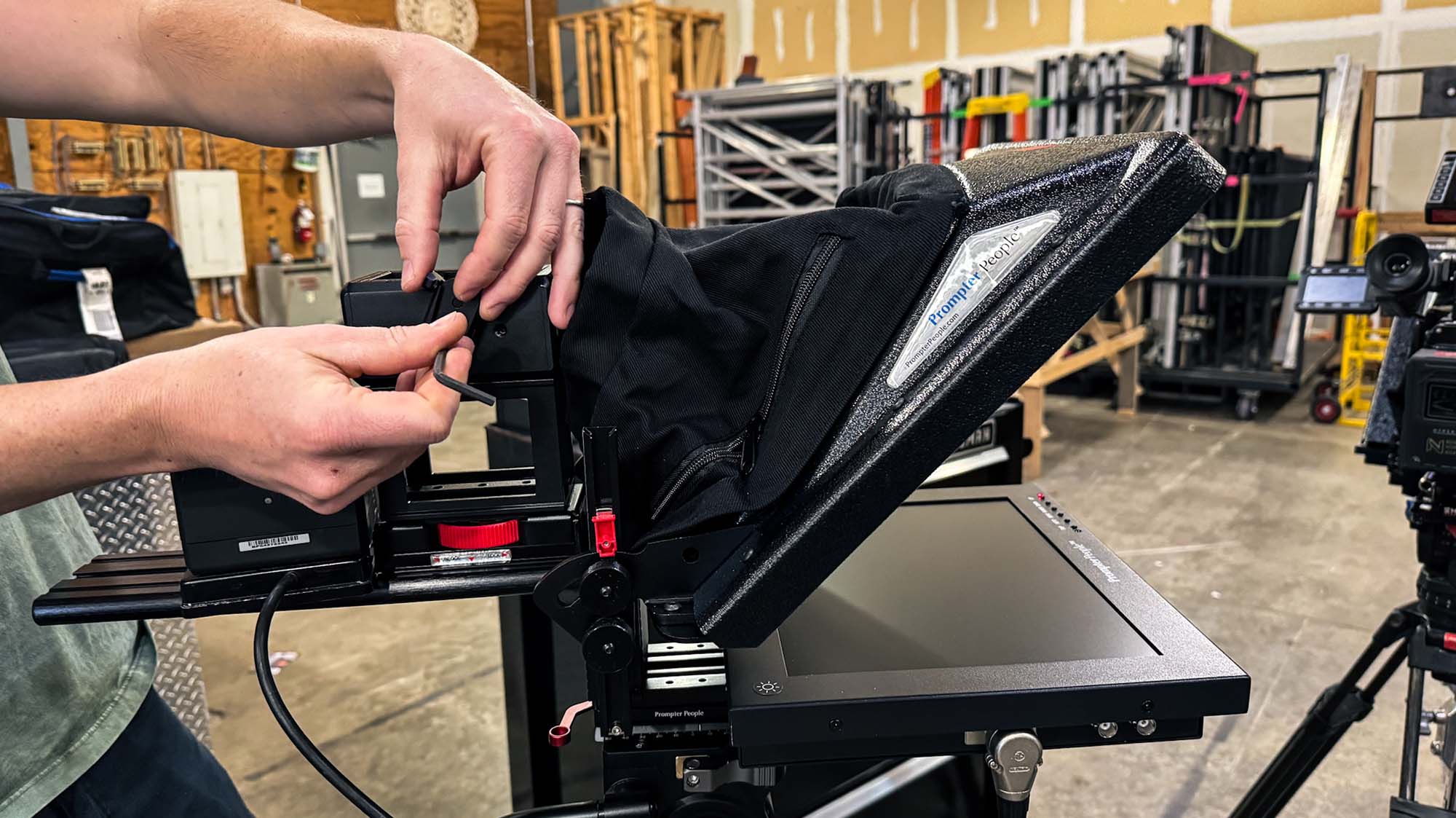
Unboxing and assembling the Interrotron parts
Building our own
There are lots of DIY videos on Youtube showing you how to make an Interrotron, and we watched them all. Then, with help from our super-handy friends David Poag and Andy Burchette, we drew up plans for our own improved version. The biggest obstacle was designing one with fewer wires and individual parts. We wanted the ability to grab it out of the case mostly pre-built and have it up and running in fifteen minutes.
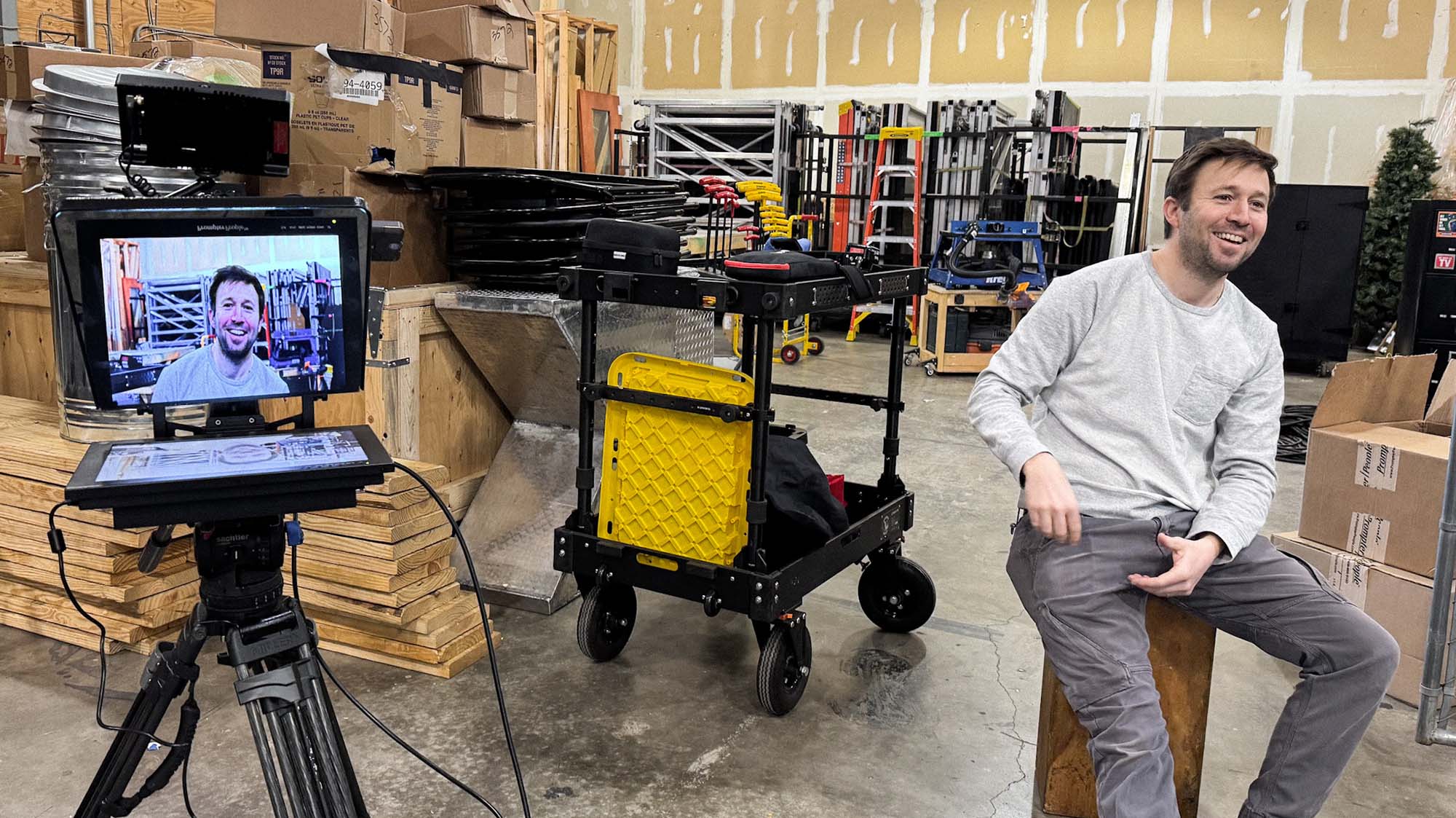
Director of Photography David Poag testing out our Interrotron at the Stonecastle shop
First, David found a cheap mini-camera that we could keep mounted in the case and use as our director’s camera. Then we decided that the main teleprompter would mount onto a rolling stand, not a tripod, so crews could build it without needing the camera. These two modifications shaved precious time off our setup.
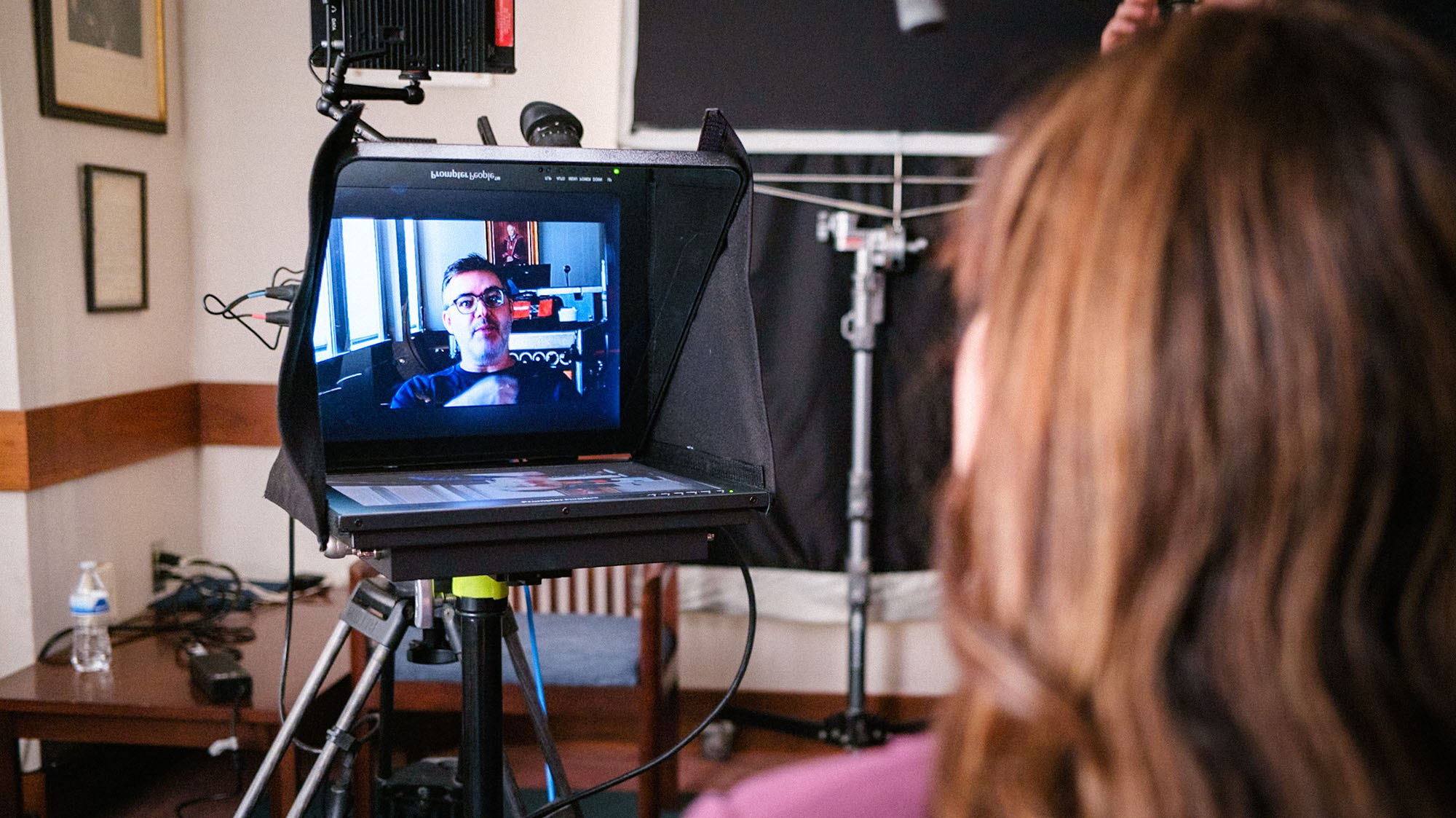
Crossing our fingers as we set up the Interrotron for its first official interview
Testing it in the field
We took our new device for a spin on a documentary shoot for Vanderbilt Medical Center, and immediately saw a difference in how our subjects performed during interviews. They settled into conversations much quicker and, most importantly, locked eyes with the director’s projection right in front of the camera lens. These weren’t just interviews. What we were getting with this new device were performances.
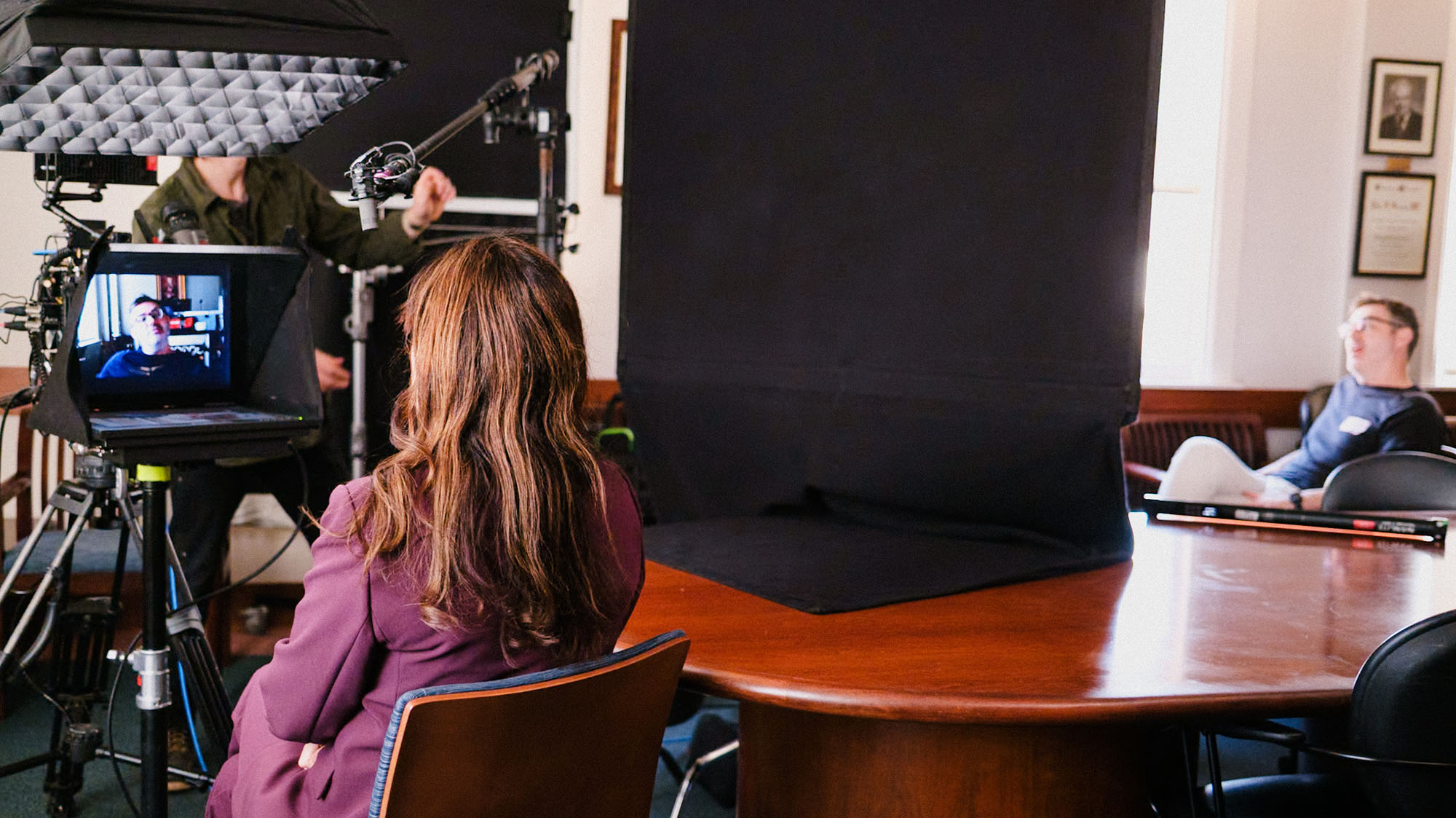
Director Barry Simmons interviewing his subject through the Interrotron
Quote There's just something so captivating about a person locking eyes with you from the other side of the screen. The device essentially takes the camera out of the equation and lets us capture the purest, most natural performance possible from a subject. — Barry Simmons / Director
The results
For us, the new ability to capture this kind of heightened performance makes it worth the price tag (about $6,000) and extra setup time. Plus, our interview subjects are always fascinated by our strange setup. It's a great ice-breaker. They love not being able to see the camera and tell us how much more natural the experience is for them — as natural, at least, as a Zoom call.
Below, you can watch the short film where we first used our Interrotron. Let us know what you think!
